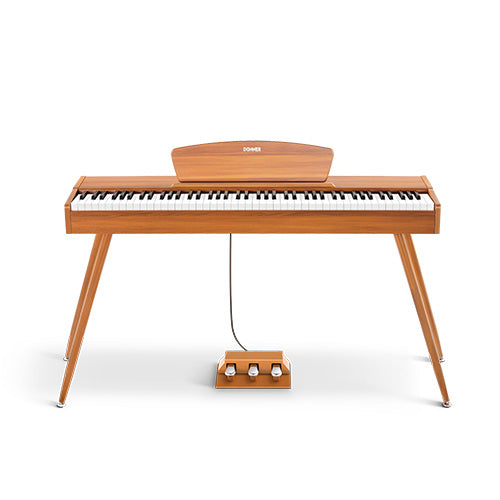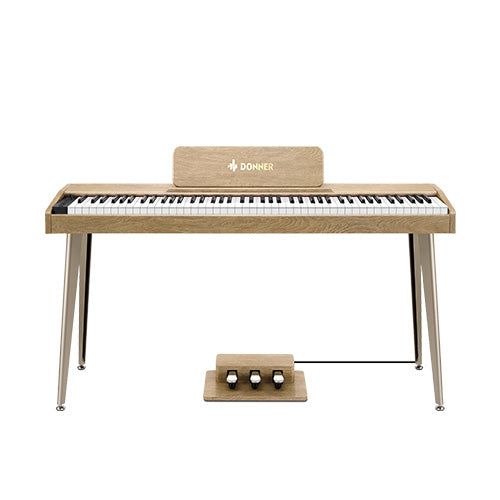When it comes to selecting the perfect electric guitar pickup configuration, two popular options stand out: SSS (Single-Single-Single) and HSS (Humbucker-Single-Single) with coil-split. Each configuration offers unique tonal qualities and advantages, making the choice largely dependent on your specific playing style and musical preferences. This comprehensive guide will help you understand the key differences, similarities, and best applications for each setup, enabling you to make an informed decision.
Understanding SSS (Single-Single-Single) Pickup Configuration
The SSS configuration features three single-coil pickups, each positioned in the neck, middle, and bridge slots of the guitar. This setup is synonymous with the iconic Fender Stratocaster sound, known for its bright, crisp, and clear tones.
Key Features of SSS:
- Classic Strat Sound: Renowned for its bright and articulate tones, perfect for genres like blues, country, pop, and funk.
- Consistency Across Positions: Provides a uniform tonal character across all pickup positions, delivering consistent single-coil sounds.
- Quack Tone: Positions 2 and 4 on the pickup selector offer the distinctive "quack" sound, ideal for rhythmic and percussive playing styles.
- Noise: Single-coil pickups are more susceptible to electromagnetic interference, leading to a hum or buzz, particularly in high-gain settings.
Best Suited For:
- Blues: The clear, dynamic response of single-coils is perfect for expressive blues playing.
- Country: The bright and twangy tones are a staple in country music.
- Pop: The articulate and sparkling sound fits well in pop music.
- Funk: The "quack" tones are highly favored in funk's rhythmic playing styles.
- Classic Rock: Ideal for clean or slightly overdriven classic rock tones.

Understanding HSS (Humbucker-Single-Single) with Coil-Split Pickup Configuration
The HSS configuration combines a humbucker in the bridge position with single-coils in the middle and neck positions, offering a versatile tonal range. The coil-split feature allows the humbucker to function as a single-coil, providing additional flexibility.
Key Features of HSS with Coil-Split:
- Versatility: The humbucker offers a thicker, more powerful sound for heavier genres, while the single-coils provide the classic Strat tones.
- Coil-Splitting: Allows the humbucker to operate as a single-coil, giving you the best of both worlds. However, a split humbucker, while similar, may not sound exactly like a true single-coil due to differences in design and application.
- Noise Reduction: The humbucker in the bridge position is less prone to noise and interference, making it suitable for high-gain applications.
- Tonal Range: Covers a broader spectrum of sounds, from clean and articulate single-coil tones to the powerful and punchy humbucker sounds.
Best Suited For:
- Rock: The versatility of HSS is ideal for rock, providing both powerful humbucker tones and clear single-coil sounds.
- Hard Rock & Metal: The bridge humbucker delivers the high output and sustain needed for these genres, with coil-splitting for cleaner passages.
- Alternative & Indie: Requires a range of tones from clean to distorted, which HSS can handle effectively.
- Fusion & Jazz-Rock: Suitable for complex tonal needs, offering clarity for intricate chords and punch for solos.
- Versatile Styles: Ideal for cover bands or players who enjoy a variety of genres, thanks to its wide tonal palette.

Similarities Between SSS and HSS with Coil-Split
- Despite their differences, SSS and HSS with coil-split configurations share several similarities:
- Single-Coil Tones: Both setups can produce single-coil sounds, with HSS achieving this through coil-splitting.
- Versatility: Both offer a wide range of tones suitable for various music styles.
- Familiar Pickup Positions: Both configurations feature neck, middle, and bridge pickups, making them intuitive for players.
- Clean Tones: Both can produce clean, articulate tones, with HSS achieving similar results to SSS when the humbucker is split.
Choosing the Right Configuration for You
When deciding between SSS and HSS with coil-split, consider the following factors:
For Classic Tones:
If you seek the traditional Stratocaster sound and primarily play clean or low-to-medium gain music, the SSS configuration is ideal.
For Versatility:
If you need a guitar that can handle a variety of styles and gain levels, the HSS configuration with a coil-split is more suitable. The ability to switch between humbucker and single-coil sounds provides a wider tonal palette.
For Noise Reduction:
If you play in high-gain settings frequently, the humbucker in the HSS setup will offer better noise reduction compared to the all single-coil SSS setup.
For Genre-Specific Needs:
- SSS Configuration: Best for styles that emphasize clean, articulate tones with a bright and clear character. Ideal for blues, country, pop, funk, and classic rock.
- HSS with Coil-Split: Best for styles that require both clean and high-gain tones, offering versatility and power. Ideal for rock, hard rock, metal, alternative, indie, and fusion.
Conclusion
Choosing between SSS and HSS with coil-split pickups depends on your musical needs and preferences. Both configurations offer unique benefits and can cater to a wide range of styles. Understanding the strengths of each setup will help you make an informed decision, ensuring your guitar delivers the tones you need for your playing style.
By considering these factors, you can select the pickup configuration that best suits your needs, whether it's the classic, consistent sound of SSS or the versatile, powerful tones of HSS with coil-split.





























